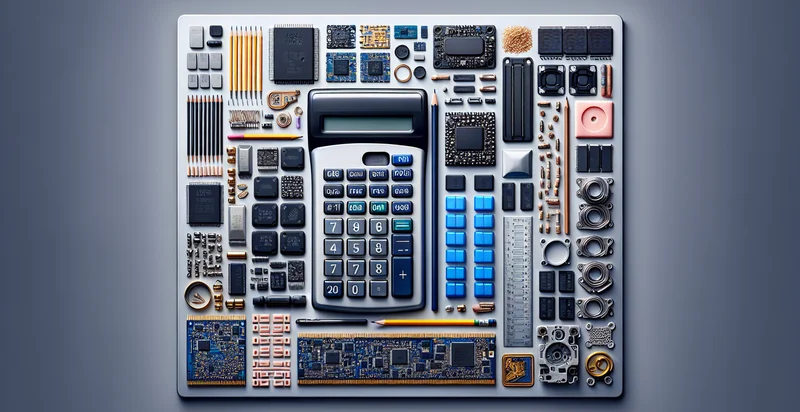Identify what material a calculator is made from
using AI
Below is a free classifier to identify what material a calculator is made from. Just upload your image, and our AI will predict what material a calculator is made from - in just seconds.

Contact us for API access
Or, use Nyckel to build highly-accurate custom classifiers in just minutes. No PhD required.
Get started
import nyckel
credentials = nyckel.Credentials("YOUR_CLIENT_ID", "YOUR_CLIENT_SECRET")
nyckel.invoke("what-material-a-calculator-is-made-from", "your_image_url", credentials)
fetch('https://www.nyckel.com/v1/functions/what-material-a-calculator-is-made-from/invoke', {
method: 'POST',
headers: {
'Authorization': 'Bearer ' + 'YOUR_BEARER_TOKEN',
'Content-Type': 'application/json',
},
body: JSON.stringify(
{"data": "your_image_url"}
)
})
.then(response => response.json())
.then(data => console.log(data));
curl -X POST \
-H "Content-Type: application/json" \
-H "Authorization: Bearer YOUR_BEARER_TOKEN" \
-d '{"data": "your_image_url"}' \
https://www.nyckel.com/v1/functions/what-material-a-calculator-is-made-from/invoke
How this classifier works
To start, upload your image. Our AI tool will then predict what material a calculator is made from.
This pretrained image model uses a Nyckel-created dataset and has 10 labels, including Ceramic, Composite, Glass, Metal, Paper, Plastic, Polycarbonate, Rubber, Silicon and Wood.
We'll also show a confidence score (the higher the number, the more confident the AI model is around what material a calculator is made from).
Whether you're just curious or building what material a calculator is made from detection into your application, we hope our classifier proves helpful.
Related Classifiers
Need to identify what material a calculator is made from at scale?
Get API or Zapier access to this classifier for free. It's perfect for:
- Product Quality Control: Manufacturers can utilize the identifier to ensure that the materials used in calculator production meet required quality standards. By detecting material discrepancies early in the manufacturing process, companies can reduce waste and improve overall product reliability.
- Recycling and Sustainability Efforts: Recycling facilities can implement this function to classify calculators based on their material composition. This enables more efficient sorting and recycling processes, contributing to environmental sustainability by ensuring that materials are appropriately processed.
- Supply Chain Transparency: Retailers can use the identifier to verify the material composition of calculators from suppliers. This helps in building trust with consumers who increasingly demand transparency regarding the materials used in their products, promoting responsible sourcing practices.
- Regulatory Compliance: Companies can leverage the identifier to ensure that their calculators comply with local and international regulations concerning material safety and environmental impact. By automating this checking process, businesses can save time and resources while avoiding potential legal issues.
- Market Research and Development: Product developers can use the material identification function to analyze market trends related to calculator materials. Understanding the materials preferred by consumers can drive innovation and guide future product design towards more desirable features.
- Warranty and Service Optimization: Customer service departments can apply the material identifier to quickly determine the appropriate warranty coverage for calculators based on the materials used. This can streamline service processes and enhance customer satisfaction by ensuring accurate warranty claims processing.
- Educational Tools and Interactive Integration: Educational institutions can incorporate the material identification feature into STEM programs. By exposing students to technology that classifies materials, they can learn about chemistry and material science in a hands-on way, fostering engagement and understanding in these subjects.


